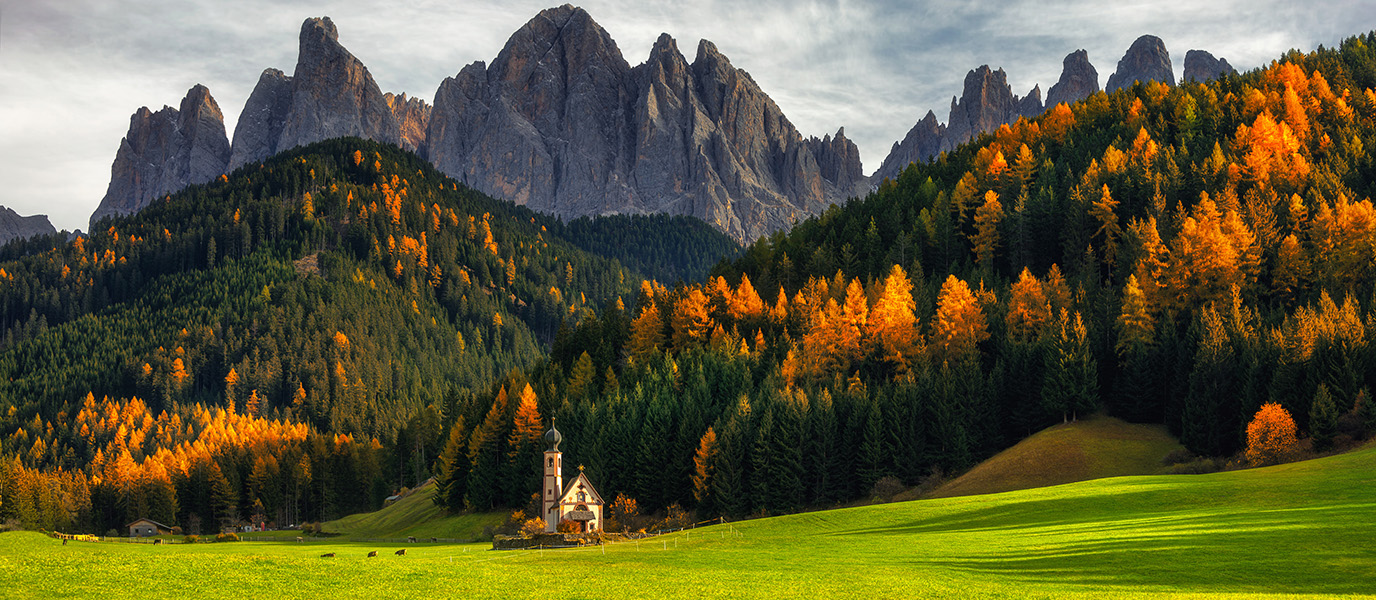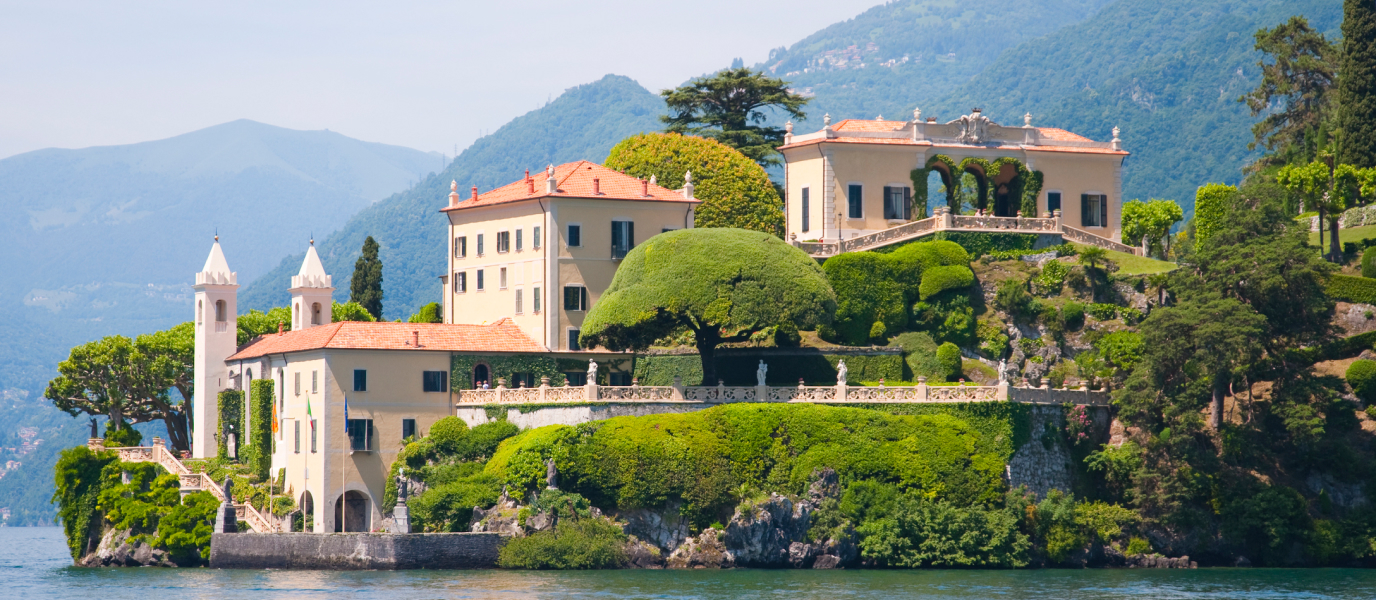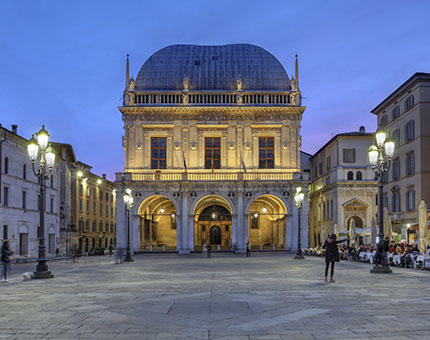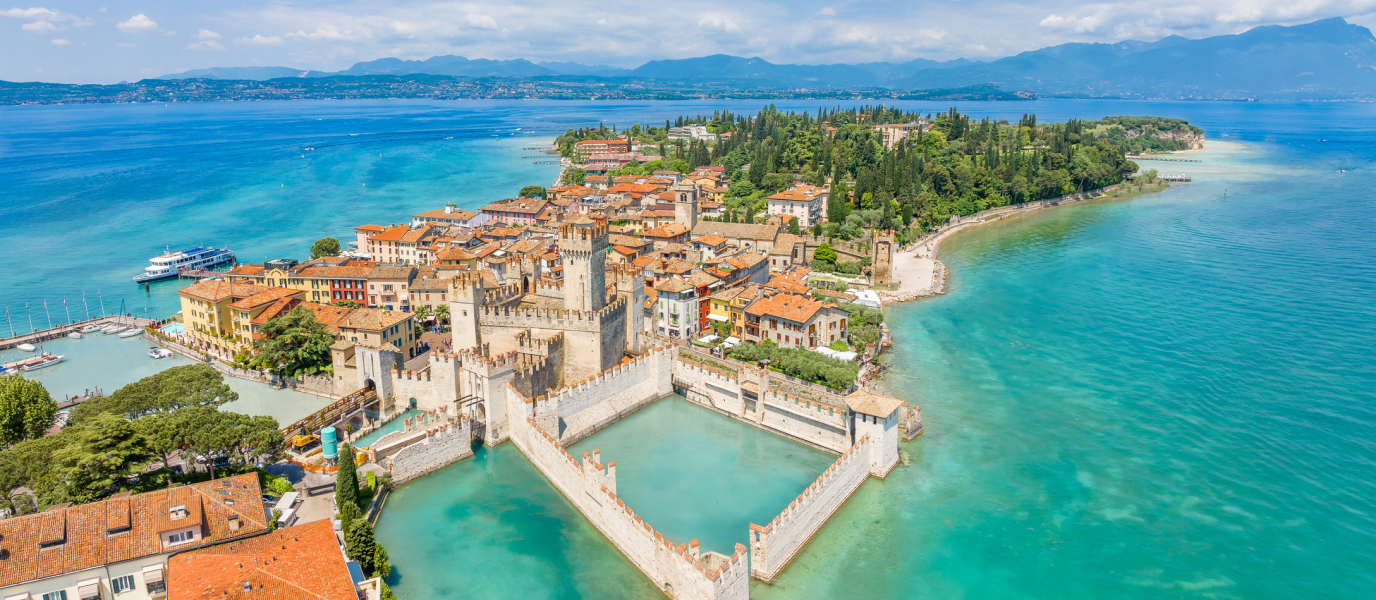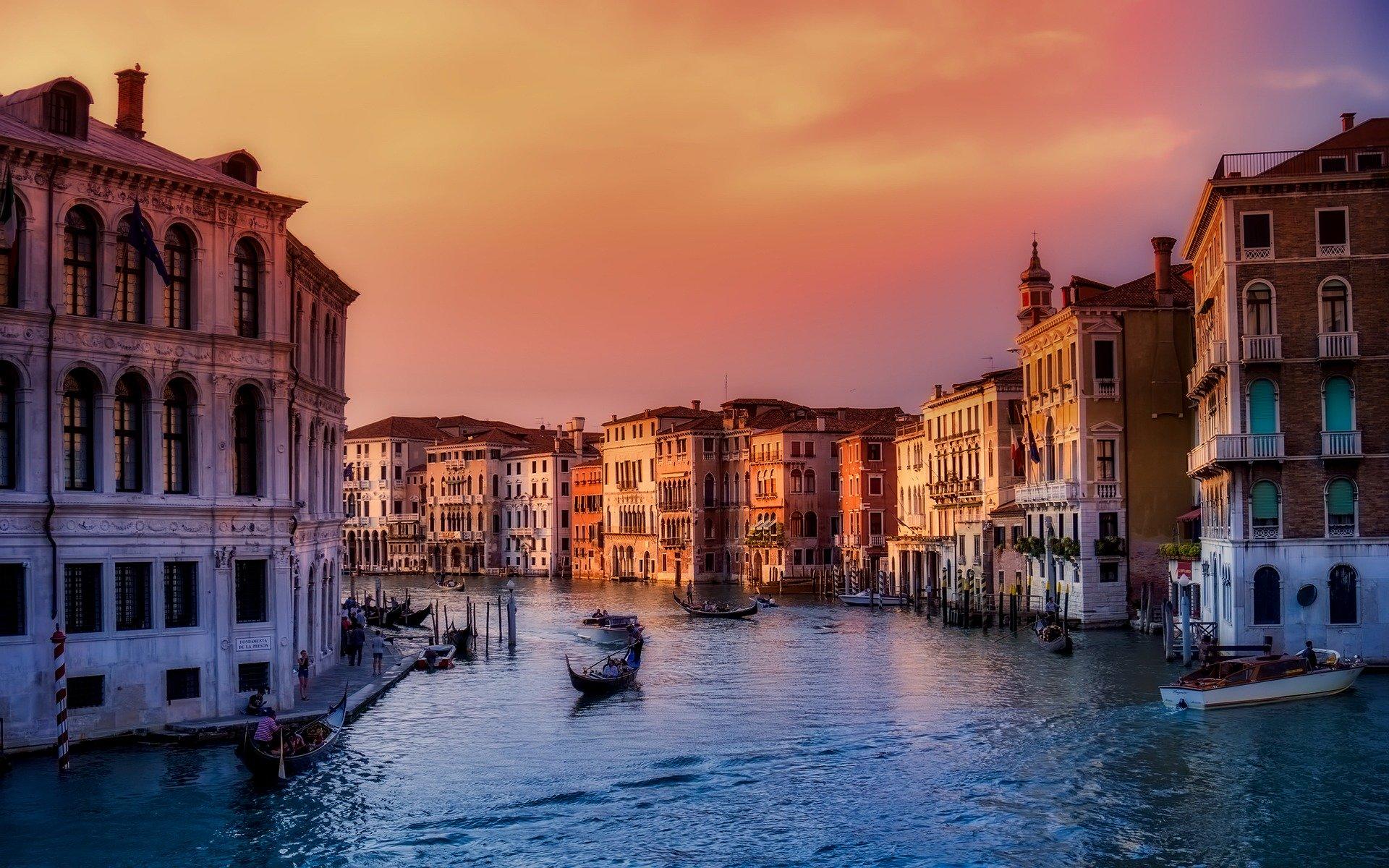The Dolomites are also known as the Alpi del Monte Rosa [the Pink Alps]. They earned this name thanks to their geological composition, based on a mineral also called dolomite (calcium carbonate and magnesium carbonate) which, in certain lights, acquires an attractive rosy glow.
In fact, the dawn and the sunset in the Dolomites are stunningly beautiful, as the rays of the sun emphasise the colour of the immense rock formations that comprise the mountains, lending the whole landscape a dreamlike quality.
Of course, the Dolomites are one of northern Italy’s most attractive and most popular places to visit. A mountain range located 200 kilometres from Milan and its renowned Cathedral, in which nature has created the most remarkable scenery.
From the highest peaks, reaching an altitude exceeding 3,000 metres, to lakes and glaciers fed by perpetual snows. With vast alpine forests and villages harking back to a traditional way of life which revolved around the mountain itself.
A dreamlike journey to the Italian Dolomites
The Dolomites have been a UNESCO World Heritage Site since 2009. According to UNESCO, the decision to accord the Dolomites this status was based on the fact that they are ‘one of the most spectacular and distinctive mountain landscapes in the world’.
The natural wealth of this massif is certainly astounding. For tourists visiting any part of the Dolomites for the first time, the reaction is invariably one of astonishment. Astonishment followed by admiration and, later, by satisfaction at having been in a unique part of Europe.
The Dolomites cover a total of 231,000 hectares, spread among the provinces of Bolzano, Trento, Belluno, Pordenone, and Udine. The range includes 30 mountain passes, around 40 glaciers, a national park, eight nature parks, and two skiing areas with 35 ski resorts.
And, of course, there are scores of high- and mid-mountain lakes, on a par in terms of beauty and scenery with Lake Como or Lake Garda.
Naturally, there are scores of trails for hiking and mountain biking enthusiasts, with varying levels of difficulty. Some are only suitable for professional sportspeople. There are also opportunities to enjoy sports such as rafting (in the Sole Valley), or climbing, with superb vias ferratas around Tre Cime di Lavaredo and La Marmolada.
What to see in the Dolomites — the essential sights
In a region as extensive and diverse as this, it is not easy to narrow down a list of the most interesting and/or attractive, places to visit. However, here are some of the most highly recommended:
Lago di Braies
In the heart of the Fanes-Sennes-Braies Nature Park, this lake is famous for its emerald-coloured waters that reflect the peaks above.
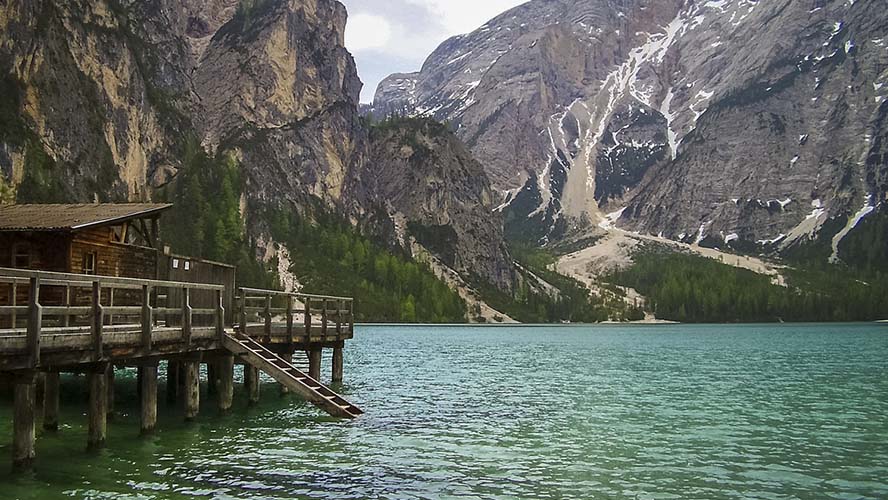
Cortina d’Ampezzo
This is home to the most fashionable ski resort in the Dolomites. It boasts 120 kilometres of ski runs, and is part of the Dolomiti Superski area with over 1,200 kilometres of ski runs.
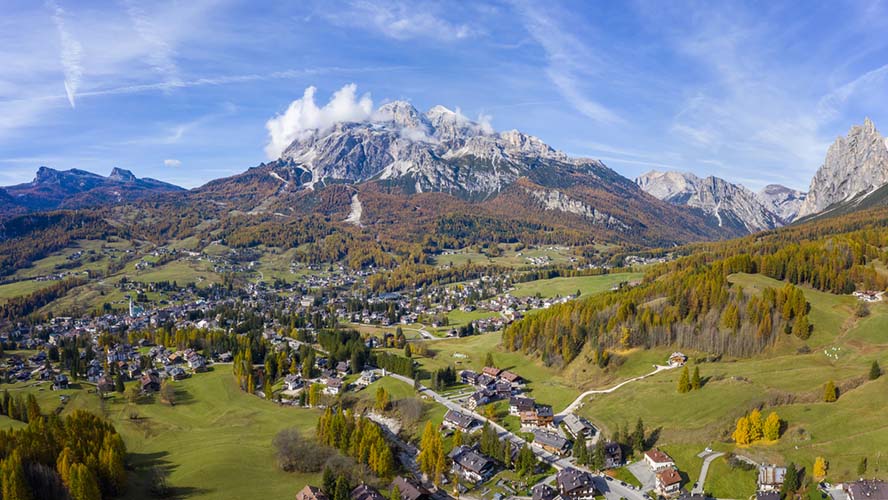
La Marmolada
The peak of this mountain, Punta Penia, soars to an altitude of 3,342 metres, making it the highest of the Eastern Alps. Vertical rock faces, permanent snows, and some of the best-known scenery in the Dolomites.
Lake Carezza
Located around 25 kilometres from Bolzano, this lake is greatly admired for its colour. In fact, its surface changes colour with every season of the year — and it is also affected by the weather.
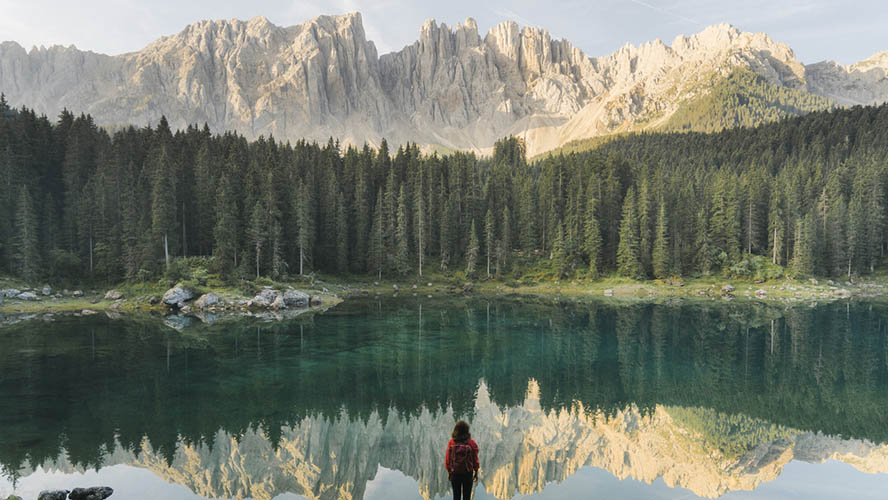
Tre Cime di Lavaredo:
This is considered the cradle of extreme mountaineering. These twin peaks (actually almost triplets), are three almost vertical rock faces that reach a height of almost 700 metres. If you are anything less than an expert, you really should limit yourself to admiring them from the Locatelli refuge.
Lake Sorapis
This lake can only be reached on foot, and at the end of a high mountain trek of around two hours’ duration. Your reward will be to find yourself in one of the most breathtaking spots in the Dolomites, on a 2,000-metre-high plateau and surrounded by towering peaks.
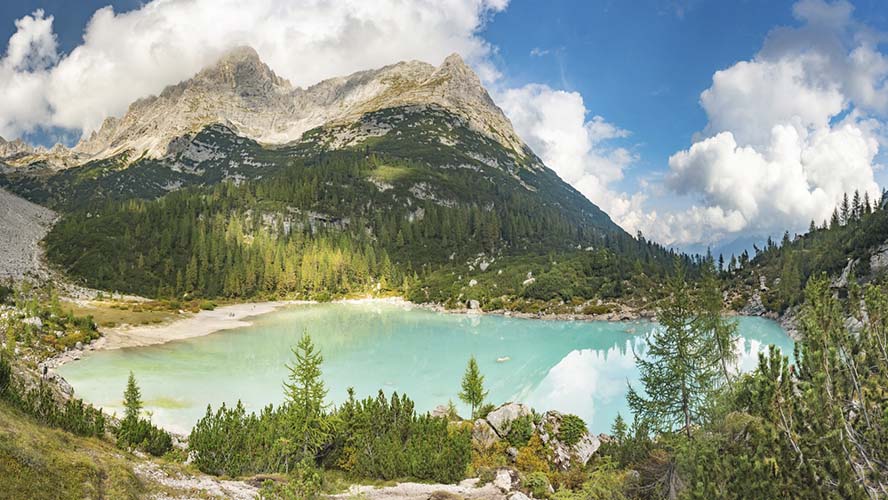
Dolomiti di Brenta
Here, in the province of Trento, are some of the finest vias ferratas to be found in the Dolomites. One of the best, but also one of the easiest, is the Bochette Central via ferrata.
The Italian Alps
It is impossible to write about the Dolomites without placing them in the context of the chain of mountains to which they belong: the Italian Alps. This great pan-European mountain range (spanning part of France, Italy, Monaco, Switzerland, Slovenia, Liechtenstein, Austria, and Germany) describes, through the north of Italy, a broken arc of mountains stretching for approximately 400 kilometres.
Within Italy, the Alps lie across six regions: the Valle d’Aosta, Piedmont, Lombardy (of which the capital is Milan), Trentino-Alto Adigio, Veneto, and Friuli-Venecia Julia. In total, they cover an area of around 3,000 km2. In other words, ten percent of the country’s total surface area. Here stands the tallest mountain in Western Europe, Monte Bianco (or Mont Blanc) which soars to an altitude of 4,810 metres, and dominates the Italian Valle d’Aosta and the French town of Chamonix.
This immense white mountain has two close rivals: Cervino (4,478 metres), which straddles the Valle d’Aosta and the Swiss canton of Valais; and the Monte Rosa massif (4,634 metres) spread over Piedmont, Valle d’Aosta, and Switzerland.
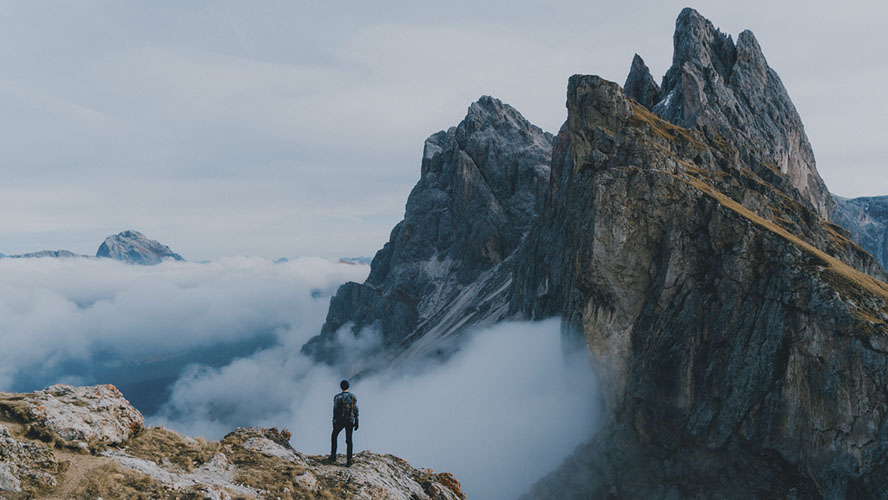
Hiking trails in the Dolomites
Some of the Europe’s finest hiking trails can be found in the Dolomites. These trails can range in duration from a few hours to several days, depending on factors such as the physical condition of the individual hiker and the starting and finishing points chosen.
One very good example is the great, seven-day hike beginning at the Munt de Sennes refuge in the province of Bolsano, and ending in Alleghe, considered one of the prettiest villages in the Dolomites.
This trail covers around 70 kilometres, passing through glorious areas such as the Croda Rossa, the Tre Cime di Lavaredo and Monte Civetta (3,220 metres).
Hikers can rest, eat and sleep at any of the many refuges along the way. This is an idea hike for late spring or summer, but the support of a specialist company is recommended for undertaking it.




































































